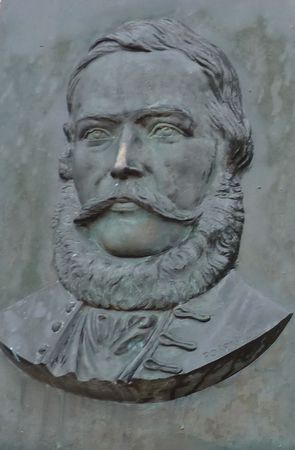DEVÍN
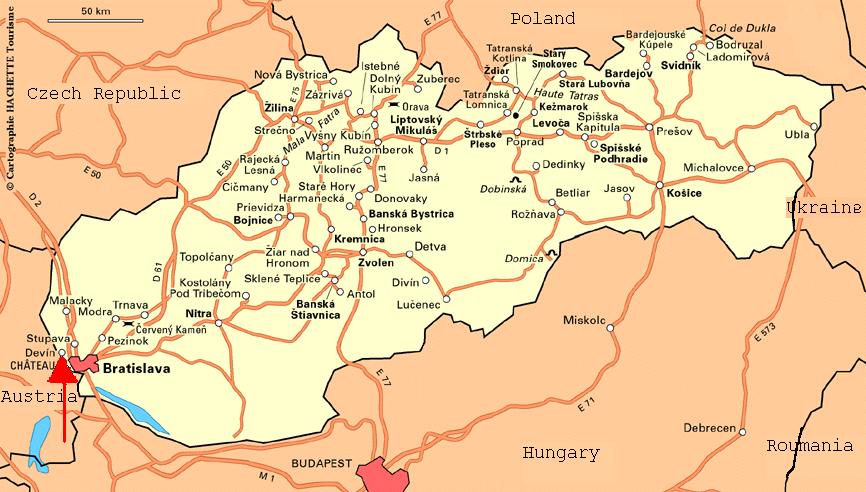 |
|
 |
LOCATION Devín castle is a fortress located in Devín village which is a part of Bratislava. The castle was built on a massive rock on the confluence of the rivers Danube and Morava, at the crossroads of the ancient Danubian and Amber routes. Its exclusive location had made it a strategically significant place since prehistoric times. Indeed from the north it was protected by the mountainous massif of the Small Carpathians and irrigated by the rivers Danube and Morava, which yielded favourable living conditions for people since time immemorial. |
|
|
But the oldest tracks were dated of 5000 BC. In the Late Stone Age the castle knoll was settled by the people of Baden Culture. In the Bronze Age the people of the Maďarovce culture built a fortified settlement on the castle mound. Later, in the Middle Bronze Age, it became the cultic centre of Podoli culture. This cultic function of Devín didn't stop with the Late Iron Age either (750 - 450 BC). |
|
The Celts arrived as military groups, subdued the local population and gradually assimilated with it. Although they were successful warriors, their settlement was destroyed approximately 100 years later by Germanic groups. |
|
At the end of the 1st century BC the Romans moved the border of their empire as far as the Middle Danube. Devín became part of the fortress defensive system Limes Romanus. |
|
The first Slavs arrived as early as the 6th century. Yet they apparently didn't settle permanently before the 9th century, at the time of the Great Moravian Empire. The famous Fulda monastery Chronicles state that in the key periods of the Franconian-Slavonic wars, Rastislav (the Great Moravian Prince (846 - 870) temporarily stayed at Devín (then known as Dowina). |
|
| After the decline of Great Moravia, Devín lost its strategic importance. It acquired it again in the 13th century with the building of an early medieval royal palace. It became a border fortress on the south western Hungarian border. The hexahedral dwelling tower built at the top of the rock with a small front yard protected by a fortified wall and a moat cut in the rock was the core of the oldest part of the castle. |  Tower from the 13th century and Courtyard of the Middle Castle |
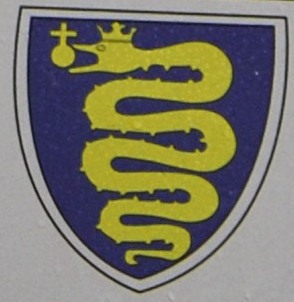 Coat of arms of the Lords of Gara |
In the 15th century the fate of Devín castle was closely linked with a prominent aristocratic family from Croatia: The Lords of Gara. King Sigismund donated the castle to Palatine Nicolaus Gara in 1420. The castle was considerably extended as a consequence of the development of military techniques as well as an increasing demand for more comfortable dwelling. The fortification of the upper castle was improved, the original tower on the rock was rebuilt and the so called Middle Castle was built as well as a Gothic dwelling palace, a small moat and a 55 metres deep well. Devín castle changed into a residence of lords of Late Gothic style. |
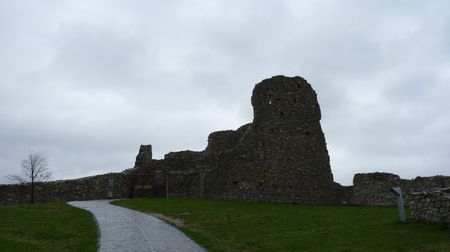 The Gara Palace |
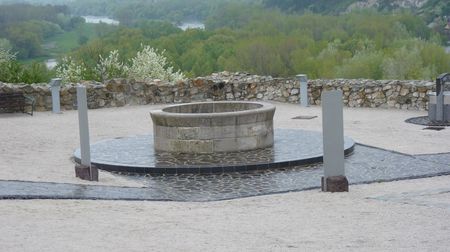 The well |
 Courtyard of the Middle Castle and The Gara Palace |
|
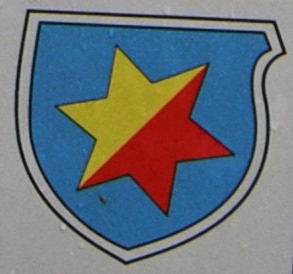 Coat of arms of the Lords of Svätý Jur and Pezinok |
The following owners of the castle were the counts of Svätý Jur and Pezinok (1460-1521). They strengthened the fortification. |
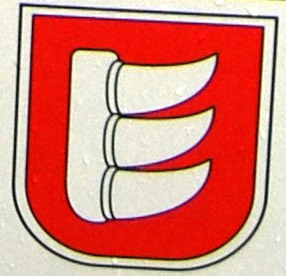 Coat of arms of the Báthory family |
After 1527 Emperor Ferdinand I gave the castle and the estate to the Hungarian Palatine Stephen Báthory. They had a new palace wing built in the Renaissance style. The riverine road under the rocky cliff was closed by a wall with a gate and a bastion and the inaccessible parts of the castle rock were walled. They also had watch towers built in the southern part. At the top of the high cliff over the confluence of the Danube and the Morava they had a small polygonal bastion with battlement built. This tower known as "the Nun" or "The Virgin Tower" has spawned countless legends and is often used as the symbol of Devín. |
 The Renaissance Palace |
|
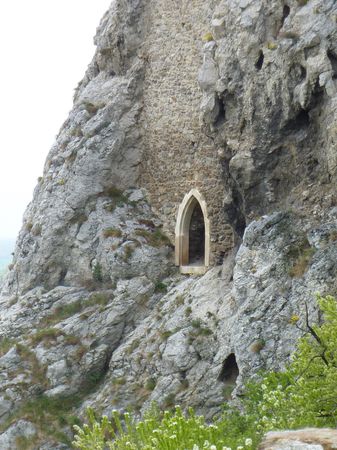 |
 "The Nun" |
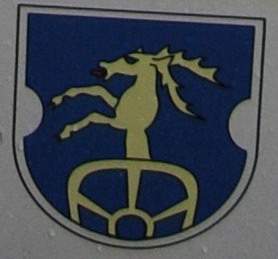 Coat of arms of the Pálffys |
The Pálffys were the last owners (1635-1935). This prominent family had ranked among the most influential aristocrats in Hungary since the 16th century. The castle wasn't suitable anymore as a residence or a military fortress, so the aristocrats lived in more comfortable castles. At the beginning of the 19th century, Napoleon invaded Eastern Europe and Bratislava and its surroundings became the venue of Napoleonic wars. In 1809, Napoleon's armies destroyed the castle. Consequently the Pálffys lost interest in the castle and the ruin gradually declined. |
| Since the 19th century, Devín has become an important national symbol for the Slovaks. It featured on the 50 Halierov coin of the Slovak currency. It became a romantic symbol of the ancient glory in the 19th century and inspired many artists and especially Romantic poets, followers of Ľudovít Štúr, the leader of the Slovak national revival in the 19th century who codified the Slovak language eventually leading to the contemporary Slovak literary language. |
|
Finally, Devín became a state property in 1935 and was declared a National cultural monument in 1961. |
|
 |
|
THE LEGEND OF THE VIRGIN TOWER Later, Margaret's uncle Rafael, the Abbot of Isenburg, came to the castle in order to set her free. His soldiers caught Margaret and they brouht her home to Carinthia. Mikuláš ran after them and won his bride back after a short fight. Back to the castle, they started to prepare the wedding. But just after the ceremony, the Abbot Rafael cheated the guards and assaulted the castle. But The Carinthians outnumbered the warriors defending Devín Castle and compelled Mikuláš to retreat to the slim tower above the confluence of the Danube and Morava, where he was killed. His young bride jumped into the Danube out of sorrow. The muddy water of the river buried the virgin Margaret on her wedding day and since then the tower on the rock has been called the Virgin Tower. |
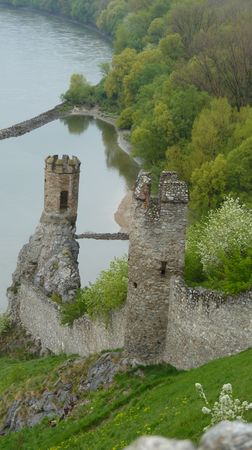 |
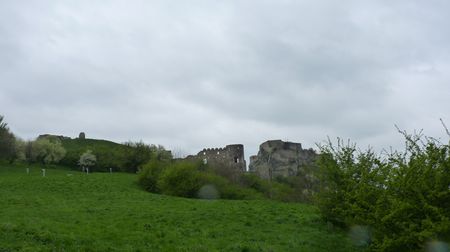 |
|
|
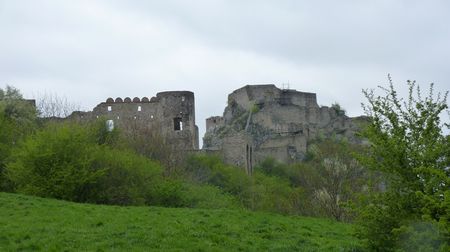 |
At that moment, Devín castle fell to the ground and her sister died. At the precise spot where the apple had fallen, a beautiful apple tree grew. The sister, appalled by what she had done, ran to that place and hugged the tree. What happened next was even more extraordinary: she heard her sister's heart inside. Just then, she started changing into a black goat. From then on, visitors of Devín have sometimes been able to see a sad black goat eating the leaves from an apple tree. |
|
